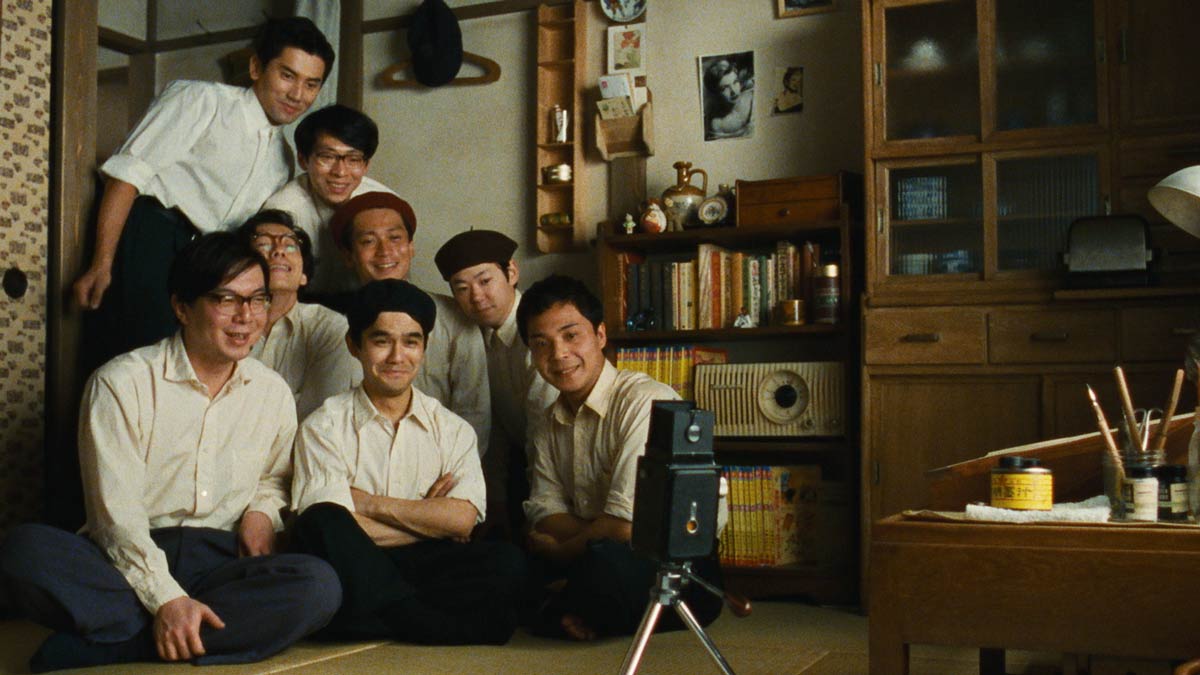
©1995/2020 Culture Entertainment Co., Ltd
"Tokiwa-so's Youth" The light and shadow of young manga artists drawn in a legendary apartment (Part 1/Planning part)
2021.02.12
How was the Tokiwaso myth born?
When did the name Tokiwaso become known to the general public?
Machiko Satonaka (manga artist) noticed that the name Tokiwaso was often found in the addresses of authors written in the margins of serialized manga in various magazines, so she said, ``When I was a child, I thought that everyone lived together.'' "I knew it from ``Surprising Momonoki 20th Century Tokiwa-sou Era ~ When Manga was Youth,'' January 6, 1995, Asahi Broadcasting). At the time, home addresses were written in magazines as recipients of fan letters, including for celebrities, so avid readers would have been aware of Tokiwaso's existence, but it was probably not widely recognized.
Critic Inuhiko Yomota wrote in `` Transfer of the Goddess: Drifting Books '' (Sakushasha) that `` Introduction to Manga Artists '' (Akita Shoten), published in 1965 by Shotaro Ishinomori (original name at the time as Ishimori), He points out that this is probably the first time he mentioned ``the story of young manga artists who gathered at Tokiwa-so.''
Four years The Day After, in 1969, was the year when the ``Tokiwaso Myth'' clearly began. This is because in that year, the manga magazine ``COM'' published by Osamu Tezuka began serializing `` Tokiwaso Monogatari,'' a series of one-shot short stories written by former resident manga artists and manga artists who frequented the area. .
That year, Ishinomori wrote an essay in the newspaper titled ``Nakama - Once Upon a Time,'' reminiscing about his time at Tokiwa-sou. It is said that Tamago's landlord boasted, ``If you stay in this apartment, you will definitely get promoted.'' (Asahi Shimbun, April 27, 1969, morning edition) It can be seen that legends are beginning to spread from inside to outside.
Tokiwaso also became the main setting for the semi-autobiographical manga Manga Michi by Fujiko Fujio (as he was known at the time), which was serialized in Weekly Shonen King from the late 1970s to the early 1980s, and its name spread further. Ta.

“Tokiwa-so's Youth” ©1995/2020 Culture Entertainment Co., Ltd
Then, in 1981, the ``Tokiwaso boom'' began. First, the documentary ``NHK Special / My Youth's Tokiwa-sou - Modern Manga Artist's History'' (broadcast on May 25, 1981), which NHK covered for a year, became a hot topic, followed by the Fuji TV animation ``We Manga''. Tokiwaso Monogatari'' (broadcast on October 3, 1981), followed by `` Chapter: Tokiwaso Spring '' (written by Shotaro Ishimori/Schola) and `` Tokiwaso Seishun Nikki '' (written by Fujiko Fujio/Kobunsha). ``Manga Shonen History'' (edited by Hiroo Terada) records the entire story of ``Manga Shonen,'' a manga magazine that is closely related to the manga artists of Tokiwaso, although it is distanced from these works. It was also in this year that the book (edited by Shonan Publishing) was published.
Of course, all of this is not a coincidence. By making full use of the media mix, it created a phenomenon that led to the appearance of an article titled ``Empathy for the Lost Experiences of Youth: The Booming Myth of Tokiwaso'' (Asahi Shimbun, December 19, 1981, evening edition). It happened.
But why 1981? At this point, not only Tezuka, but also Fujiko, Ishinomori, and Akatsuka were well known beyond the boundaries of manga artists, but most importantly, it was decided that Tokiwaso would be demolished in the fall of that year due to deterioration. is large. The NHK documentary program begins with a scene where former residents and manga artists who used to come and go gather at Tokiwa-sou, regretting the demolition.
The actual demolition work was carried out from November 29th to December 10th, 1982, which was postponed for a year due to various circumstances.However, in order to complete the Tokiwa-sou myth, it is important that Tokiwa-sou still exists and that it is It would only work if the timing stirs up nostalgia for the fact that it will soon disappear. In other words, it cannot be done too early or later than the fall of 1981, when it was scheduled to be demolished. The ``Tokiwaso boom'' was launched at the perfect time.
Five years The Day After, in 1986, Fujiko's ``Manga Michi'' was made into a drama series on ``NHK Galaxy TV Novel'', and the sequel, ` `Manga Michi Seishun Hen '' produced the following year, had Tokiwaso as the main stage. At this point, Tokiwaso's name became even more widely recognized, but since I was young in 1981, I missed out on the boom, but ``Manga Michi'' was adapted into a drama based on the original manga. I picked it up for the first time when the beloved edition of ``Tokiwaso'' was released, and the existence of Tokiwa-sou was imprinted on me through the manga and video.
Tokiwa-so has been featured in documentaries, animations, books, and dramas, but the movie version had to wait until 1996, 15 years after the Tokiwa-so boom, when director Jun Ichikawa made ``The Tokiwa-so's Youth.'' did not become.
What did the up-and-coming commercial director see in Tokiwaso?

